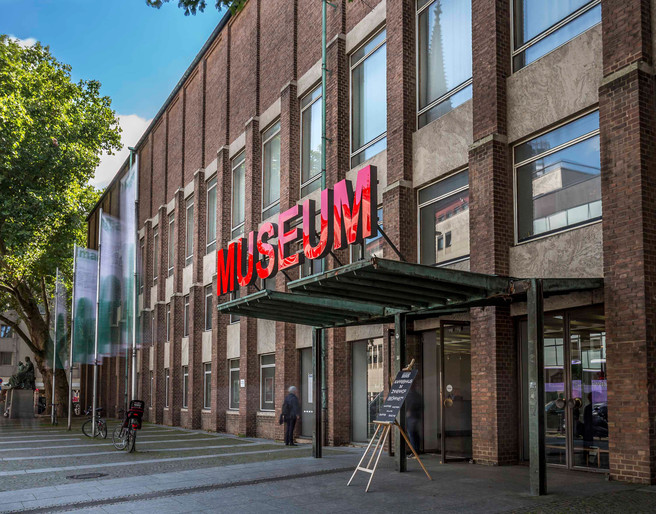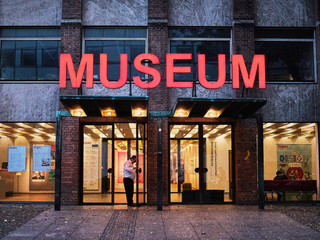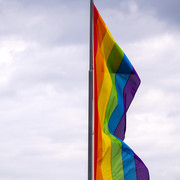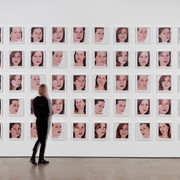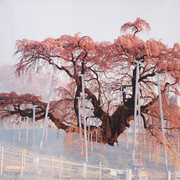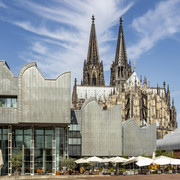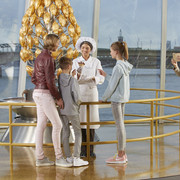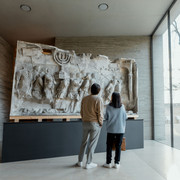Photos & Map
Details
Useful Information
Nearby
or MAKK for short
Sink deep into a soft and deep leather armchair and put up your feet as though you were settling into a well-used baseball mitt. If you’re lucky enough to own an Eames lounge chair, you’re familiar with the sense of comfort induced by this design classic. This is where form and function unite in the comfiest way — and how a piece of furniture soars out of the world of pure functionality and reaches the level of “applied art”.If you’re interested in the creation and use of everyday objects and in modern design, you can’t pass up the opportunity to visit MAKK. That’s because this Cologne museum is home to the most significant European collection of applied art from the Middle Ages to the present day.
Numerous historical objects and exhibits from the areas of home decor, tableware, luxury objects and jewellery await you — about 250,000 objects from the Middle Ages, the Renaissance, the Baroque and Rococo eras all the way to Biedermeier, Historicism, Art Nouveau and Modernism.
Two focal areas: the historical collection and the design department
The first focal area of the permanent exhibition, the historical collection, is currently being reorganized — and is therefore, unfortunately, not open for visitors. However, visitors still have access to the second focal area, the design department, which displays classic designs and icons of the 20th century. If you’re already familiar with them, there are other options for an inspiring visit. Numerous special exhibitions throughout the year, digital services and film showings in the CineMAKK offer visitors ever-changing new insights into applied art and fine craftsmanship.The design department of MAKK: a unique collection and a singular exhibition concept
Design and fine art in a dialogue — with this special exhibition concept in mind, MAKK opened its new design department in 2008. The department represents almost all the notable designers, producers and manufacturers — for example, Charles and Ray Eames, Frank Lloyd Wright, Dieter Rams, Stiletto, Philippe Starck, Ettore Sottsass and Joe Colombo. The exhibits include articles of daily use such as containers, household utensils, dishes, cutlery, cameras, furniture, telephones, radios, lamps and TVs. The special aspect of the exhibits is that they are always displayed in the context of paintings or sculptures by significant international artists of the time, such as Piet Mondrian, Wassily Kandinsky, Jesús Rafael Soto or Victor Vasarely.Our tip for a relaxing break: The museum’s interior courtyard
In the gregarious city centre of Cologne, an oasis of calm awaits you in the interior courtyard of the MAKK, which features a fountain designed by Ewald Mataré. Here you can take a break from all of the visual impressions and objects you’ve experienced. It’s a good spot for contemplation, especially during the summer months.The Museum of Applied Art: its history
The Museum of Applied Art, which was founded in 1888, is Cologne’s second-oldest museum, the oldest one being the Wallraf-Richartz-Museum. The exhibitions draw mainly from the collections of the scholars Ferdinand Franz Wallraf and Matthias Joseph de Noël, which are continually supplemented by foundations, especially the Cologne Citizens’ Foundation. During World War II, the museum building on the Hansaring was destroyed — but fortunately the collection was saved. The museum was eventually resettled in the midst of the city centre in 1957 in a building designed by Rudolf Schwarz and Josef Bernhard. Although the building was controversial at the time, today it’s one of the architectural icons of the city of Cologne.The museum building — a synthesis of tradition and modernity
The MAKK was built right next to one of Cologne’s oldest churches, and its ground plan and appearance, including the interior courtyard, refer back to the former Minorite monastery complex, which was torn down in 1855. Parts of the old cloister were integrated into the new building.The museum building looks plain and closed from the outside, but a fascinating cathedral-like space opens up in the interior, with a main hall, an open staircase and galleries leading to the light-flooded exhibition rooms. However, before you enter you need to humbly cross the entrance foyer with its low ceiling — this is how the museum visualizes a conceptual bridge between tradition and modernity.
Useful Information
Openings
Dayoff: Monday
General Information
Parking Available
Eligibility
Bad Weather Offer
Suitable for any weather
for Groups
for Class
for families
for individual guests
Suitable for the Elderly
Accessibility
Parking facilities
The walk from Cologne main station takes about 300 meter.
Social Media
